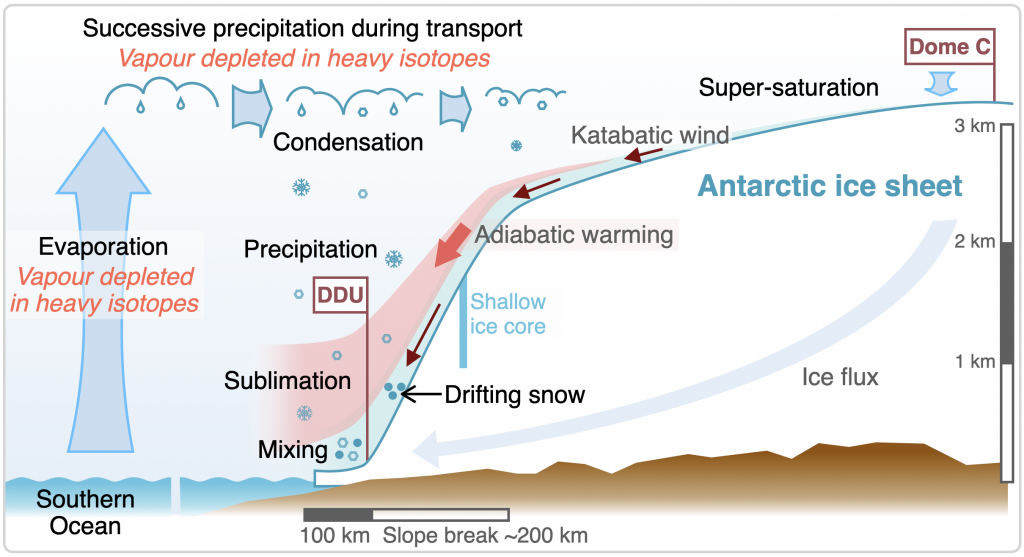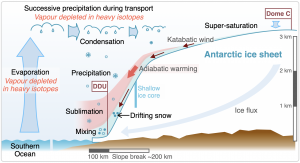HDR from Université Paris-Saclay defended Cécile Agosta on May 12, 2025
The Antarctic ice sheet is closely linked to climate through atmospheric circulation and the water cycle. My research aims to better understand and model the processes involved in this water cycle, with two main areas of application: (i) improving reconstructions based on the isotopic signal of annually resolved firn cores and (ii) improving projections of Antarctic climate and its contribution to sea level.
To understand the climate factors driving the water isotopic signal measured in high-resolution firn cores, I use the global atmospheric model LMDZiso.
New isotopic records of surface snow and water vapor in Antarctica, deployed by the GLACIO team, allow us to evaluate this model at the process scale.
We can then use the process decomposition from the model to interpret the isotopic variability of vapor.
Ongoing work aims to improve isotopic processes in snow and during air-snow exchanges.
This is a fundamental step towards using water isotopes to constrain physical processes. It will also enable the assimilation of paleoclimate data with reduced uncertainties in the modeling chain.
Modeling the future of the Antarctic climate, including its surface mass balance, requires accurately representing both large-scale circulation and processes specific to polar regions.
I design specific indicators to assess the large-scale circulation of CMIP models in polar regions, as well as diagnostics to assess snow accumulation on the ice sheet.
I design specific indicators to assess the large-scale circulation of CMIP models in polar regions, as well as diagnostics to assess snow accumulation on the ice sheet.
Finally, the development of new methods for decomposing the momentum budget allows us to quantify the factors controlling surface winds in Antarctica.
My current and future research aims to improve polar physics in the IPSL atmospheric model, ICOLMDZiso, with the goal of creating an integrated framework for the water cycle from ocean to snow, including water isotopes and coupling with ice sheet models.


